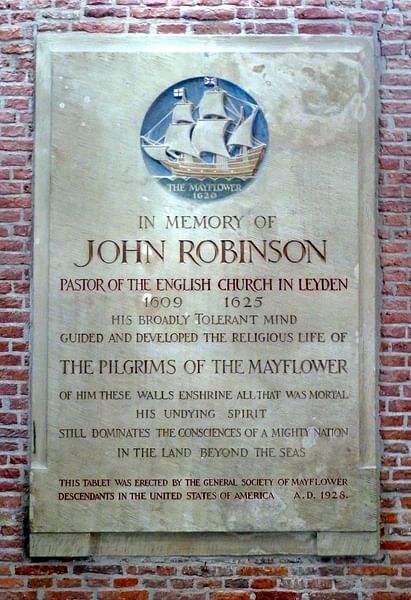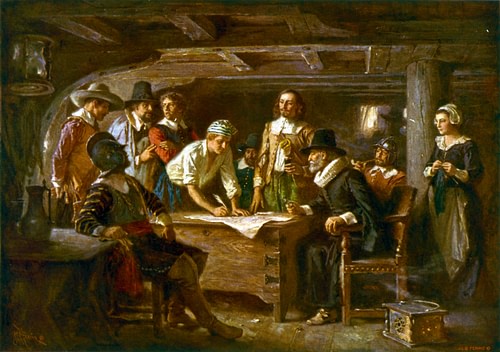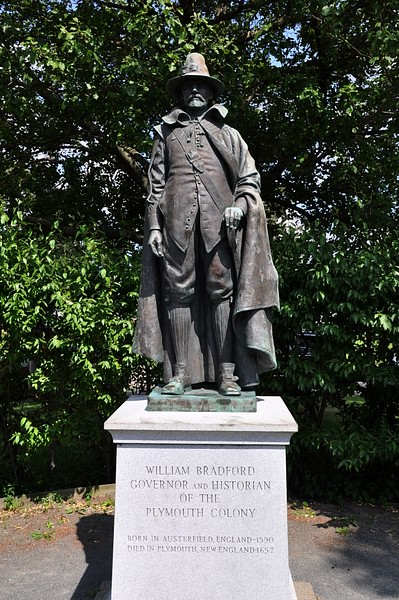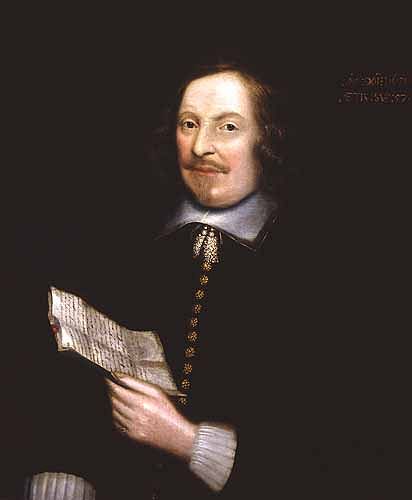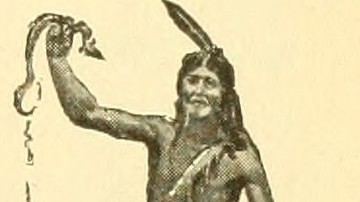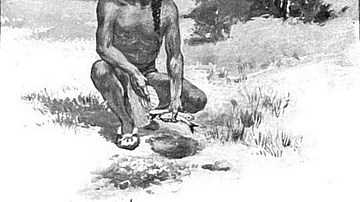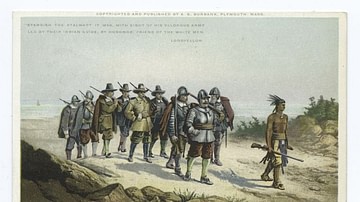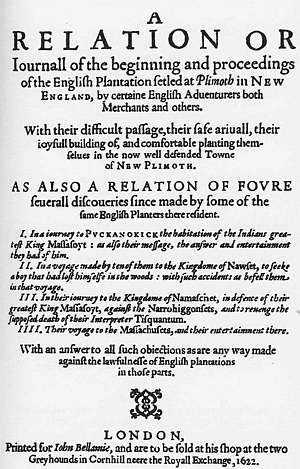
Mourt's Relation (published 1622 CE) is an account of the first year of the Plymouth Colony founded by the pilgrims who arrived in Massachusetts in November 1620 CE aboard the Mayflower. Its original title was A Relation or Journal of the Beginning and Proceedings of the English Plantation Settled at Plimoth in New England, shortened to Mourt's Relation after the name of the publisher, George Morton (also given as George Mourt, l. c. 1585-1624 CE), a member of the congregation of separatists who made up half the passengers aboard the Mayflower. It was written by two of the leading colonists, William Bradford (l. 1590-1657 CE) and Edward Winslow (l. 1595-1655 CE), both of whom would serve as governors of the colony multiple times.
The work is a journal of the pilgrims' voyage, landing, and the development of the colony from 6 September 1620 CE, when the Mayflower left from Plymouth, England, to 11 December 1621 CE, after the settlement was firmly established. It contains the first accounts of the signing of the Mayflower Compact, the First Encounter with Native Americans, the first winter during which 50% of the passengers and crew died, and the colony's salvation through the intervention of the Native Americans Samoset (l. c. 1590-1653 CE), Squanto (l. c. 1585-1622 CE) and the chief of the Wampanoag Confederacy, Massasoit (l. c. 1581-1661 CE) as well as the account of the First Thanksgiving.
The manuscript was brought back to England from the colony by Robert Cushman (l. 1577-1625 CE), another member of the congregation who, like Morton, had not sailed on the Mayflower (but came later) and who had been lead negotiator in financing and equipping the 1620 CE voyage. The ship Cushman was returning on, the Fortune, was seized by the French who looted not only the goods in the hold but the passengers' personal items; yet Cushman refused to surrender the manuscript and oversaw its publication once he was back in England.
Mourt's Relation is often compared with the more famous Of Plymouth Plantation written by Bradford between 1630-1651 CE. The earlier work may have served as a source for the later piece but Bradford's book is far more comprehensive, covering the vision of the religious separatists who made the voyage and continuing long past the harvest feast (now known as the First Thanksgiving) of 1621 CE to end in 1650 CE. While Bradford's work is better known, it was not published until 1856 CE. Mourt's Relation, published in 1622 CE, encouraged members of the congregation still in Europe, and others, to follow the pilgrims' example in colonizing present-day New England.
Form & Contents
The work is a compilation of the journal entries written by Bradford and Winslow with letters and other documents by others included. It begins with a letter from Robert Cushman introducing the manuscript to one John Pierce, a banker with the Virginia Company of London under whose name the patent for the Plymouth Colony would be issued in 1621 CE. The pilgrims were supposed to have landed in Virginia but were blown off course to Massachusetts where their patent was invalid. They were, therefore, essentially squatters living there illegally until the Pierce patent was issued. Cushman no doubt wrote this letter to reassure Pierce that his investment in the colony was not in vain and he could expect a return on it.
Cushman's letter is followed by an introduction by the publisher George Morton, who notes the purpose of the voyage and establishment of the colony was expressly to spread the Christian gospel to the Native Americans (a claim contradicted by Bradford and Winslow in other works but one which they would not have denied). Morton's letter is followed by another by the pastor of the Leiden congregation, John Robinson (l. 1576-1625 CE), the spiritual advisor of the colony who remained in the Netherlands. This is followed by the account given by Bradford and Winslow, and the work ends with an essay by Cushman encouraging the further colonization of North America.
The purpose of the work seems to have been twofold:
- To reassure investors that the colony was a success
- To encourage others to join the colony or to establish their own
It was almost certainly also written to comfort the members of the congregation who had remained behind regarding those Mayflower passengers who died the first winter as well as inspiring them to now make the journey themselves to a settlement already established. The difficult and painful winter of 1620-1621 CE – whether in Mourt's Relation or Bradford's later work – is downplayed in an effort to highlight the success of the colony and the opportunities to make one's fortune in the New World.
Mayflower Voyage & Settlement
Told in the first person, Mourt's Relation reads very much like a journal, omitting information the authors believe an audience already knows and focusing on the events which took place after the congregation left England. Much of the following, which is dealt with in detail in Bradford's work, is omitted from Mourt's Relation, which has encouraged scholars to conclude that the Leiden congregation was the primary audience for the earlier work while Bradford (as he himself states) was writing for his descendants so they would have a record of the early years of the colony.
The people who have come to be known as pilgrims were religious separatists who had fled persecution in England for the religiously tolerant Netherlands. King James I of England (r. 1603-1625 CE) was the head of the Anglican Church which, though Protestant, had retained a number of aspects of Catholicism which Puritans (those who wished to “purify” the church of anything unbiblical) objected to. A number of Puritans were not interested in reforming the Church, however, and following the example and teachings of a former Anglican priest turned reformer, Robert Browne (l. 1550-1633 CE), chose to separate themselves from the Church and form their own, independent, congregations which were based solely on their literal interpretation of the Bible.
Once in the Netherlands at Leiden, however, they found they could only hold the most menial jobs and, further, that their children were assimilating into Dutch culture and losing their English heritage. The congregation was already looking into relocating to North America – where England had established the colony at Jamestown in 1607 CE – when, in 1618 CE, one of their members, William Brewster (l. 1568-1644 CE) published an anti-Anglican tract which resulted in orders issued by the English crown for his arrest. The congregation hid Brewster but understood they needed to leave quickly and so Robert Cushman and John Carver (l. c. 1584-1621 CE) returned to England and negotiated with the merchant adventurer Thomas Weston (l. 1584 - c. 1647 CE) who matched them with investors from the Virginia Company, the same as had financed the Jamestown expedition.
A friend or member of the congregation had purchased them a passenger ship, the Speedwell, and Weston rented them the Mayflower as a cargo vessel. They were supposed to leave mid-summer, by themselves, but Weston changed the deal and stipulated that a number of others, not of their faith (whom they referred to as Strangers) would be accompanying them because he felt they were too inexperienced to establish a successful colony which would turn a profit for the investors. Initially, the two ships started out together, but the Speedwell leaked and had to be abandoned. All 102 passengers then crossed the Atlantic aboard the Mayflower, leaving England on 6 September and sighting the coast of Cape Cod on 9 November 1620 CE.
They had been blown far off course and the patent they had been issued, for lands in Virginia, was invalid in Cape Cod which meant that the English law they expected to find established did not apply either. A dispute arose between some of the Strangers and members of the congregation regarding this resulting in the composition and signing of the Mayflower Compact, creating a democratic form of government, which 41 of the men on board then signed, agreeing to abide by it.
After a winter in which 50% of the passengers and crew died, the survivors continued to struggle until help arrived in the form of the nearby Native Americans, especially Squanto, who taught them how to survive. The colony flourished afterwards, a peace treaty was forged – and kept – with Massasoit, and the pilgrims' success encouraged the arrival of more ships and the proliferation of more colonies.
Mourt's Relation & Of Plymouth Plantation
Mourt's Relation provides much of the above information which is more fully developed in the first book (and first two chapters of the second book) of Bradford's Of Plymouth Plantation. Major differences in the works are that Mourt's Relation was written for publication while Bradford's work was not, even though Of Plymouth Plantation is a much more polished and comprehensive piece, and that the earlier work is in the first person while the latter is written in the third, and that Mourt's Relation has a much tighter focus. It is unclear who wrote which sections of Mourt's Relation or how much Morton may have contributed or revised. It is generally believed that Winslow wrote most of the book with Bradford contributing some sections or passages.
There are significant differences in choice of detail and style between the two. Mourt's Relation begins with the Mayflower sailing from Plymouth, England in the first chapter:
Wednesday, the sixth of September, the wind coming east-north-east, a fine small gale, we loosed from Plymouth, having been kindly entertained and courteously used by diverse friends there swelling, and after many difficulties in Boisterous storms, at length, by God's providence, upon the ninth of November following, by the break of day we espied land which we deemed to be Cape Cod, and so afterwards it proved. (15)
This same event is given by Bradford in Of Plymouth Plantation in Book I. ch. 9 after he has related the reasons for the congregation's voyage to the New World, the troubles they had in financing and provisioning the trip, and the loss of the Speedwell, necessitating all of the passengers travel together aboard the Mayflower:
These troubles being over, and all being together in the one ship, they put to sea again on September 6th with a prosperous wind, which continued for several days and was some encouragement to them, though, as usual, many were afflicted with sea-sickness…After they had enjoyed fair winds and weather for some time, they encountered cross winds and many fierce storms by which the ship was much shaken and her upper works made very leaky. One of the main beams amid-ships was bent and cracked, which made them afraid that she might not be able to complete the voyage. (Book I. ch. 9)
Bradford further develops the narrative for a few more paragraphs before reaching the part where the ship sights land. This model, of Bradford's work developing the accounts of the earlier book, does not always hold, however, as there are some events – notably the so-called First Thanksgiving – which are given in far greater detail in Mourt's Relation than in Bradford's work. Bradford simply relates:
They began now [fall of 1621 CE) to gather in the small harvest they had, and to prepare their houses for the winter, being well recovered and in health and strength and plentifully provisioned; for while some had been thus employed in affairs away from home, others were occupied in fishing for cod, bass, and other fish, of which they caught a good quantity, every family having their portion. All summer there was no want. And now, as winter approached, wild fowl began to arrive [and] they got abundance of wild turkeys besides venison. (Book II.ch.2)
Mourt's Relation gives a much fuller account and the one which is often reprinted in the modern era as the story of the First Thanksgiving:
Our harvest being gotten in, our governor sent four men on fowling, that so we might after a special manner rejoice together after we had gathered the fruit of our labors. They four in one day killed as much fowl as, with a little help beside, served the company almost a week. At which time, amongst other recreations, we exercised our arms, many of the Indians coming amongst us, and among the rest their greatest king, Massasoit, with some ninety men, whom for three days we entertained and feasted, and they went out and killed five deer, which they brought to the plantation and bestowed on our governor, and upon the captain [Myles Standish] and others. (82)
Mourt's Relation ends shortly after this account with the author (probably Winslow at this point) extolling the virtues of the New World and inviting others to come:
I make no question but men might live as contented here as in any part of the world. For fish and fowl, we have great abundance; fresh cod in the summer is but coarse meat with us; our bay is full of lobsters all summer and affordeth variety of other fish; in September we can take a hogshead of eels in a night, with small labor, and can dig them out of their beds all the winter. (84)
This last section, which continues with praise of the Christianization of the Native Americans and the peace one might expect in New England, encouraged others to leave their homes and follow the example of the pilgrims in coming to the New World. George Morton himself made the journey with his family in 1623 CE, dying in Plymouth Colony the following year. His sister-in-law, Alice Southworth, would become the second wife of William Bradford and the couple would raise Morton's children as their own.
Conclusion
The book seems to have been circulated in the years after its publication but had gone out of print by the beginning of the 18th century CE and was lost until 1820 CE when an edition was discovered in Philadelphia, USA, and republished in 1841 CE to much greater acclaim. Bradford's book was unavailable at this time and so Mourt's Relation became the primary source for information on the Plymouth Colony – which had already assumed mythic status in the collective consciousness of the United States – until 1856 CE when Of Plymouth Plantation was published.
It is unclear how wide an audience Mourt's Relation initially had or what its effect was on colonization, but Winslow's second publication, Good News from New England, which picks up where the first book ends, was among the many books on the market which encouraged the Great Migration of Puritans from England to New England. Published in 1624 CE, Good News was most likely read by the Puritan leader John Winthrop (l. c. 1588-1649 CE), founder and first governor of the Massachusetts Bay Colony, who encouraged over 20,000 colonists to join him in New England between 1630-1636 CE. This is not to say that Winslow's book was the sole motivator by any means, but it certainly would have contributed to the widespread allure the so-called New World had acquired among the English Puritans.
As more Europeans arrived, the Native Americans were pushed further and further from their traditional lands, and resources were steadily depleted. The natives negotiated and renegotiated with the immigrants until it was clear that treaties such as the one forged between the Plymouth Colony and Massasoit no longer held any meaning for the English. Rising tensions finally broke out in the conflict known as King Philip's War (1675-1678 CE), which was won by the colonists after much bloodshed on both sides. The memory of this first civil war on North American soil would be preserved by English writers in a number of books and would help shape colonial and then United States policy toward Native Americans from the 17th-20th centuries CE.
